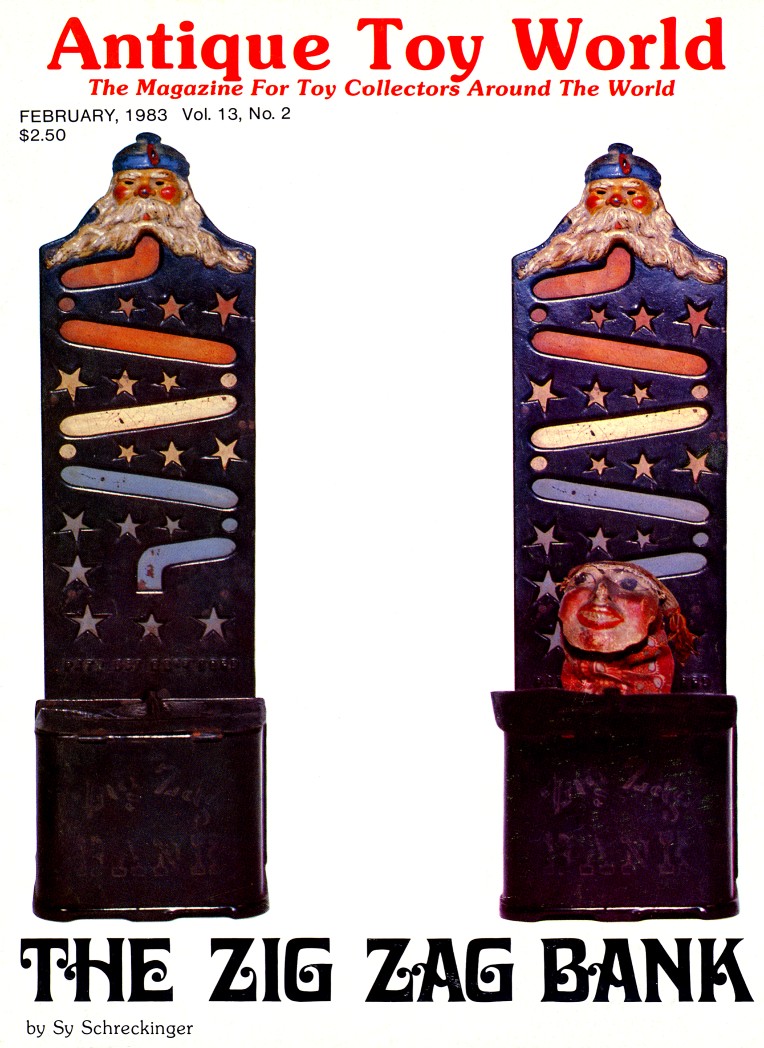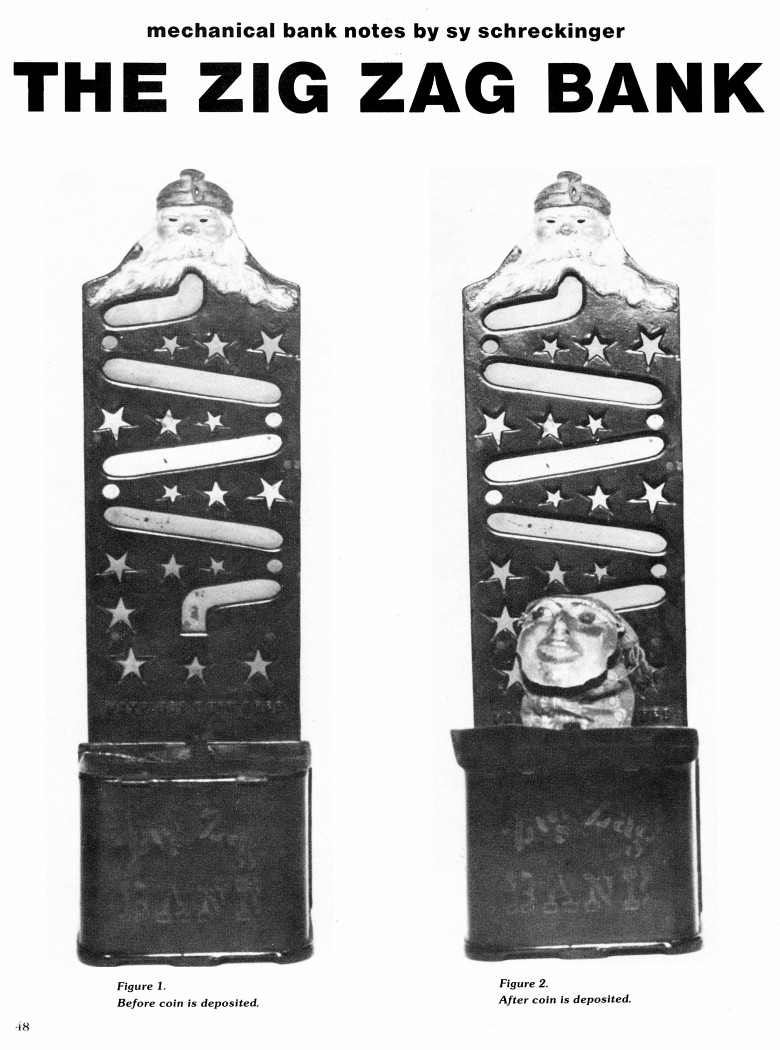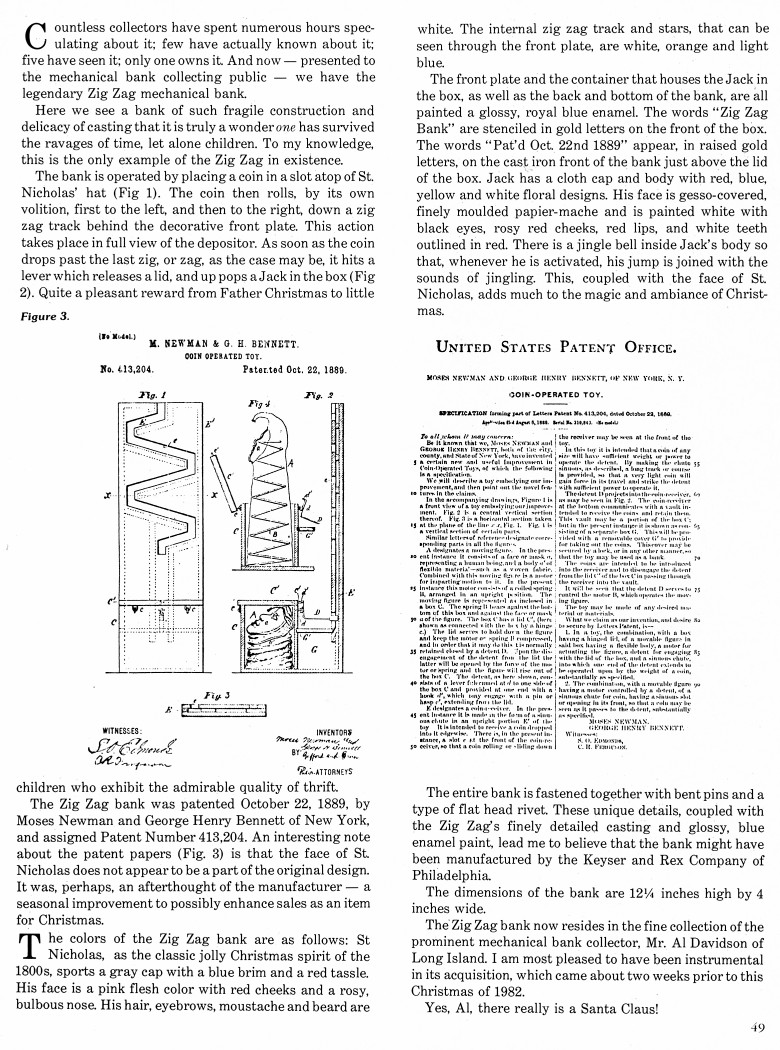|
The Zig Zag Bank
by Sy Schreckinger – ANTIQUE TOY WORLD Magazine – February,
1983
Countless collectors have spent numerous hours
speculating about it: few have actually known about it; five have seen it:
only one owns it. And now — presented to the mechanical bank collecting
public — we have the legendary Zig Zag mechanical bank.
Here we see a bank of such fragile construction and delicacy of
casting that it is truly a wonder one, has survived the ravages of time,
let alone children. To my knowledge, this is the only example of the Zig
Zag in existence.
The bank is operated by placing a coin in a slot atop of St.
Nicholas' hat (Fig 1). The coin then rolls, by its own volition, first to
the left, and then to the right, down a zig zag track behind the
decorative front plate. This action takes place in full view of the
depositor. As soon as the coin drops past the last zig, or zag, as the
case may be, it hits a lever which releases a lid, and up pops a Jack in
the box (Fig 2). Quite a pleasant reward from Father Christmas to little
children who exhibit the admirable quality of thrift.
The Zig Zag bank was patented October 22, 1889, by Moses Newman and
George Henry Bennett of New York, and assigned Patent Number
413,204. An
interesting note about the patent papers (Fig. 3) is that the face of St.
Nicholas does not appear to be a part of the original design. It was,
perhaps, an afterthought of the manufacturer — a seasonal improvement to
possibly enhance sales as an item for Christmas.
The colors of the Zig Zag bank are as follows: St Nicholas, as the
classic jolly Christmas spirit of the 1800s, sports a gray cap with a blue
brim and a red tassel. His face is a pink flesh color with red cheeks and
a rosy, bulbous nose. His hair, eyebrows, moustache and heard are white.
The internal zig zag track and stars, that can be seen through the front
plate, are white, orange and light blue.
The front plate and the container that houses the Jack in the box, as
well as the back and bottom of the bank, are all painted a glossy, royal
blue enamel. The words "Zig Zag Bank" are stenciled in gold letters on the
front of the box. The words "Pat'd Oct, 22nd 1889" appear, in raised gold
letters, on the cast iron front of the bank just above the lid of the box.
Jack has a cloth cap and body with red, blue, yellow and white floral
designs. His face is gesso-covered, finely molded papier-mâché and is
painted white with black eyes, rosy red cheeks, red lips, and white teeth
outlined in red. There is a jingle bell inside Jack's body so that,
whenever he is activated, his jump is joined with the sounds of jingling.
This, coupled with the face of St. Nicholas, adds much to the magic and
ambiance of Christmas.
The entire bank is fastened together with bent pins and a type of
flat head rivet. These unique details, coupled with the Zig Zag's finely
detailed casting and glossy, blue enamel paint, lead me to believe that
the bank might have been manufactured by the Keyser and Rex Company of
Philadelphia.
The dimensions of the bank are 12-1/4 inches high by 4 inches wide.
The Zig Zag bank now resides in the fine collection of the prominent
mechanical bank collector, Mr. Al Davidson of Long Island. I am most
pleased to have been instrumental in its acquisition, which came about two
weeks prior to this Christmas of 1982.
Yes, Al, there really is a Santa Claus!
|



